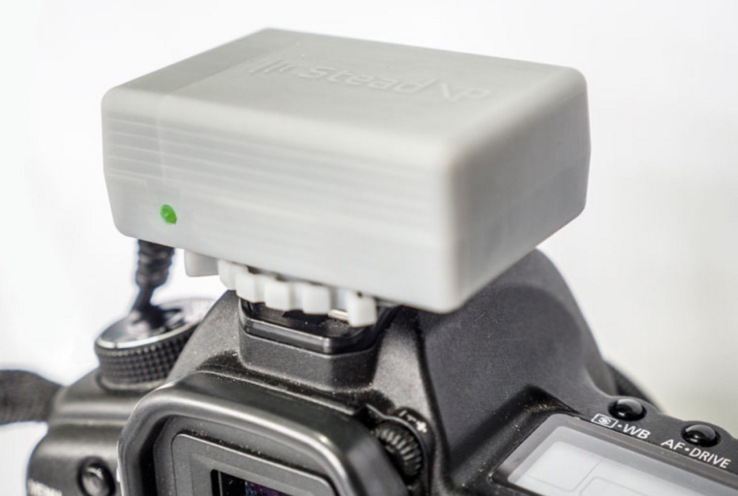

Hand-holding video always seems like such a good idea until you’re watching the footage back in the editing suite. Wobblycam is a pain in the backside and can take forever to fix in post-production. That is, in theory. Until SteadXP came along. Except not quite.
The idea is simple; You connect a SteadXP unit to the hotshoe of your camera, and you start filming as normal. The accelerometers in the camera record the movement of your camera, and syncs it up with the video content. When you import your footage, you just subtract the movement from your footage, and BOOM, there you go, perfectly stable footage, courtesy of Software Magic from an ambitious French company in Montbonnot Saint-Martin.
Or at least, that’s the theory. The demo I saw at CES worked pretty well, to be fair, but it’s not like wobbly footage is a problem that hasn’t been solved a thousand times over. More and more cameras have optical or digital image stabilization built in. On top of that, image stabilization is bread and butter of even basic image stabilization packages. Post-production packages give you a ton of AI smarts, too.
The problem with all of these solutions is that if you shoot video properly, you’re probably aiming for a shutter angle that suits your frame rate. That’s fancy videographer speak meaning that you’re shooting relatively long shutter speeds. At 30 fps, you probably want 1/60 second shutter speeds to make the motion flow well. In photography terms, 1/60 isn’t enough to freeze motion, and so you get some motion blur. That looks “right” on moving pictures, but for action sequences, that means that every individual frame is slightly blurry. A product like SteadXP can align a frame with the frame preceding it, but it can’t do anything about the camera blur that was introduced in the process, which makes the stabilized footage look sort of weird.
All of this is a long-winded way of saying “Lovely idea, but I really can’t see how this solves the problem at hand. Get a Tripod or a Steadicam rig.” In the name of fairness, I should also mention that 2,280 people believe I am incorrect in this assessment, backing the SteadXP product on Kickstarter with more than half a million dollars. The company has plenty of examples on its website, so judge for yourself!

